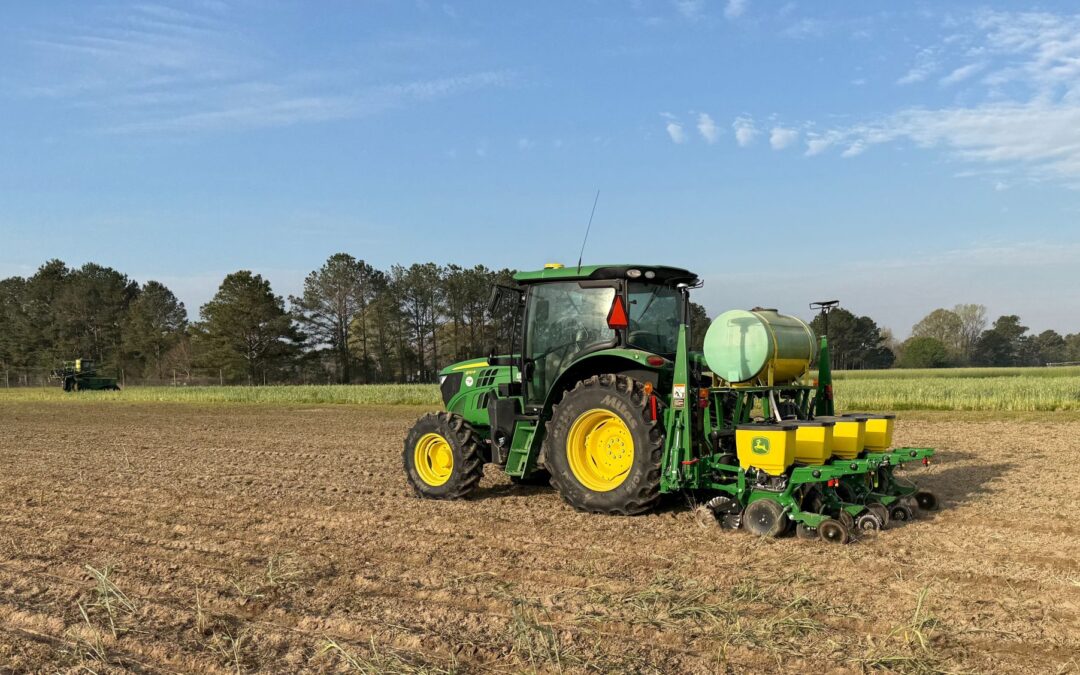As John Mahas prepared for a move to start postdoctoral research at Cornell University, he was still wrapping up research in the Auburn University lab where he earned his master’s and doctorate.
It was here he focused his work on managing the emerging cotton leafroll dwarf virus (CLRDV) and its vector, the cotton aphid, Aphis gossypii. This research led to the publication of two peer-reviewed papers, one of which marked a first in the Southeastern United States.
“CLRDV can cause yield loss in cotton, which in turn can reduce the farmers’ profits,” Mahas said. “Yield loss attributed to CLRDV can be difficult to parse out as there are interacting biotic and abiotic factors at play. Further research is needed to understand under what environmental conditions CLRDV can cause yield loss in cotton, and what factors may be driving CLRDV incidence and vector abundance in cotton fields.
“This information can help us to identify regions at higher risk for CLRDV infection and aphid vector infestations, which in turn can aid in future CLRDV management strategies.”
This marked the first study to research management strategies for CLRDV in the Southeastern U.S.
Mahas and the research team found that the efficacy of aphid vector management to reduce final CLRDV incidence was investigated concurrent with efforts to monitor aphid population dynamics and timing of CLRDV spread.
“In our research, we studied ways to manage the virus by using different cotton planting dates and insecticides, but these methods didn’t stop the virus from spreading,” Mahas said. “Despite using insecticides, the aphids were still present, and nearly all the cotton plants got infected with the virus. We found that cotton aphids were more abundant during times of virus spread.”
Adjusting the planting date and insecticide applications did not reduce the final incidence of CLRDV, which was confirmed in 60–100% of plants per plot using RT-PCR.
Aphid population density was reduced, but not eliminated with foliar insecticide applications. Aphis gossypii was the only species observed on cotton and was the dominant species collected in pan traps.
Three distinct periods of virus spread were detected with sentinel plants including early, mid-and late-season. Most virus spread occurred during large aphid dispersal events.
Mahas is taking his experience in studying crop-pest systems like this one with him to Cornell, where he will be a postdoctoral research associate under the guidance of Professor Brian Nault, focusing on the ecology and management of corn earworm in sweet corn.
“Although I am now working with a different crop-pest system, I am applying the skills and expertise I acquired at Auburn to this new challenge,” said Mahas.
He credits his success at Auburn and the College of Agriculture to the guidance of Associate Professor Alana Jacobson, who advised him in both his master’s and doctoral programs.
“I had access to excellent lab resources, worked with a great team, and was able to obtain my Graduate Certificate in Geographic Information Systems Science while working on my PhD,” he said. “Auburn and the College of Agriculture were incredibly meaningful to me and became my new home.”
Mahas served as the vice president of the Entomology and Plant Pathology Club, competed in the college’s Graduate Poster Showcase, and served as a teaching assistant for economic entomology.
“Auburn became my first job where I looked forward to waking up the next morning to get to work,” he said. “I will always cherish and think fondly of my time at Auburn and all the friends I’ve made along the way.”





